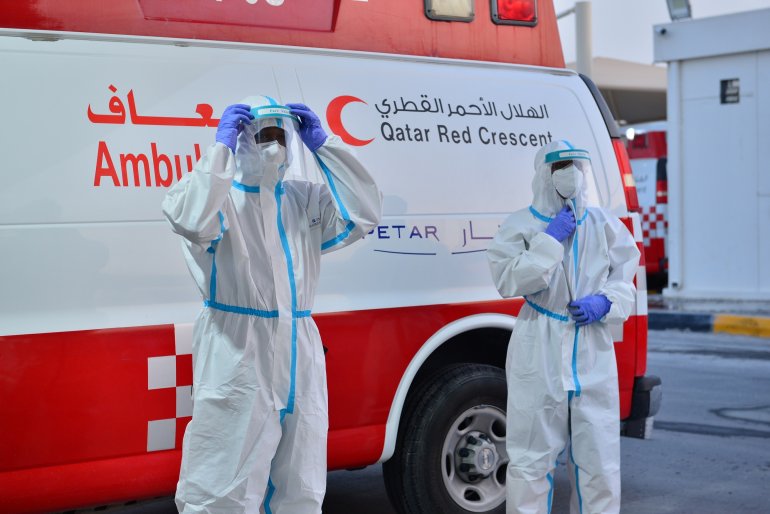
Dr. Hassan Ali Kassem, Chief Medical Officer of Qatar Red Crescent Society’s (QRCS) Medical Affairs Division, described the medical professionals as “showing extraordinary performance in fulfilling their humanitarian and professional responsibilities”.
According to him, they were of the biggest effect, together with other government and nongovernment players, in combating the coronavirus (COVID-19) and making impressive results that were praised by both the beneficiaries and partners.
“The Medical Affairs Division is the part of QRCS responsible for providing medical and treatment services for expatriate workers,” said Dr. Kassem. “Under a contract with the Ministry of Public Health (MOPH), we work with Hamad Medical Corporation (HMC) to operate health centres in different parts of the country to provide medical and ambulance services for workers”.
“Since the outbreak, there was effective cooperation among QRCS, MOPH, HMC, and Primary Health Care Corporation (PHCC). A special department was created for the patients with respiratory illnesses who show symptoms similar to those of COVID-19. It is a separate building with its own entrance, exit, clinics, pharmacy, and cashier. First, a patient is admitted to the triage room to evaluate the case and prescribe the medication. Then, he is referred to HMC’s Communicable Disease Center (CDC) for coronavirus testing.
“As the number of cases climbed, an internal coronavirus testing unit was created at the Al Hemailah Health Centre, followed by another one at the Fereej Abdulazeez Health Centre. Together, they conduct 500-700 swabs on average per day. After that, the visitor is given a sick leave for 2-3 days until the swab result is reported by HMC’s laboratory. If found positive, the person is referred to an isolation centre, in coordination with the COVID-19 System Wide Incident Command Committee (SWICC). If not, he is allowed to resume his normal life, while strictly observing the preventive requirements.
“During the swabbing process, the person is registered into QRCS’s medical system, which is synchronised with Cerner, the standard system of MOPH and the HMC. Then, the swabs are preserved in special containers and sent for lab testing. At the same time, the results show on the Ministry of Interior’s (MOI) system, reflecting on the person’s Ehteraz app (red for positive and green for negative). The result is also sent via SMS.
“Formerly, the swabbed persons had to stay at the health facility until the results are reported. This caused trouble for the person and crowds in the place. Now, every person swabbed is advised to isolate himself at home until the result is received. For those who are positive, they are transported by QRCS’s buses to the quarantine facility, in coordination with SWICC. “QRCS’s ambulance fleet works closely with HMC’s Ambulance Service. We also worked with PHCC for transportation of the patients. Some QRCS ambulance vehicles are stationed at the isolation centres, such as Mekaines, Abu Sidrah, and Umm Salal (Umm Qarn), to transport the patients.
“At QRCS’s Training and Development Centre, extensive training courses were held, both in-house and on the field. The health trainers and educators visited many locations to raise public health awareness about the pandemic. The medical professionals and first responders attended informative sessions about the disease, causes, prevention, how to deal with infections, and the right way to use personal protective equipment while moving the patients.”
